Amelia Harnas likes to move around a lot. From her hometown in Corning, NY she’s lived in Portland, OR and Paris, France but considers Kassel in Germany her home from home. She currently resides in Portland, ME.
At a very early age, Amelia inhaled paint thinner and had to sleep overnight in an air tent at Corning Hospital. You could say that art has been in her blood since birth.
Amelia co-founded a semi-private art festival called The Hours Festivals, of which she is incredibly proud. It’s a very important way for her to facilitate and actively participate in collaborative efforts and experimentation.
In this interview we discover more about Amelia’s childhood, growing up surrounded by a family of makers. We learn how combining wine stains with the batik technique helps her to produce her stunning imagery and why she considers herself to be a multipotentialite.
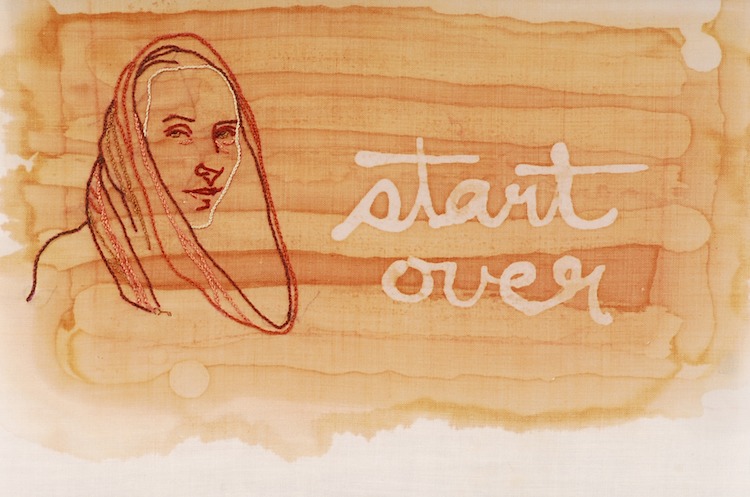
From rags to rugs
TextileArtist.org: What initially attracted you to textiles as a medium?
Amelia Harnas: My mother has got some serious chops when it comes to crocheting, embroidering, and sewing: she is a miracle-worker when it comes to mending. I have fond memories of the pockity-pockity-pockity sound coming from her 40-year-old sea foam green Singer sewing machine.
We would take special trips to JoAnne Fabrics to pick out patterns and bargain fabric for new outfits. She’d let me take fabric scraps so I could knot together wild Amazonian child warrior costumes. In addition, when I was 7 years old, she hauled out bags of raw sheep wool and taught me how to card and spin yarn with a drop spindle.
My maternal grandmother owns a large loom for her rag rugs. One summer, when I was 9 years old, she taught me how to cut worn-out jeans into strips, sew them end to end, and then weave them into a sturdy rug.
I fell in love with it so much, the next year, I was in a period costume in our local historic inn, explaining to visitors how flax was turned into linen and operated a giant antique loom with a heavy swinging beater and my feet not quite reaching the foot pedals.
So, with this background, using textiles as a medium was only natural.
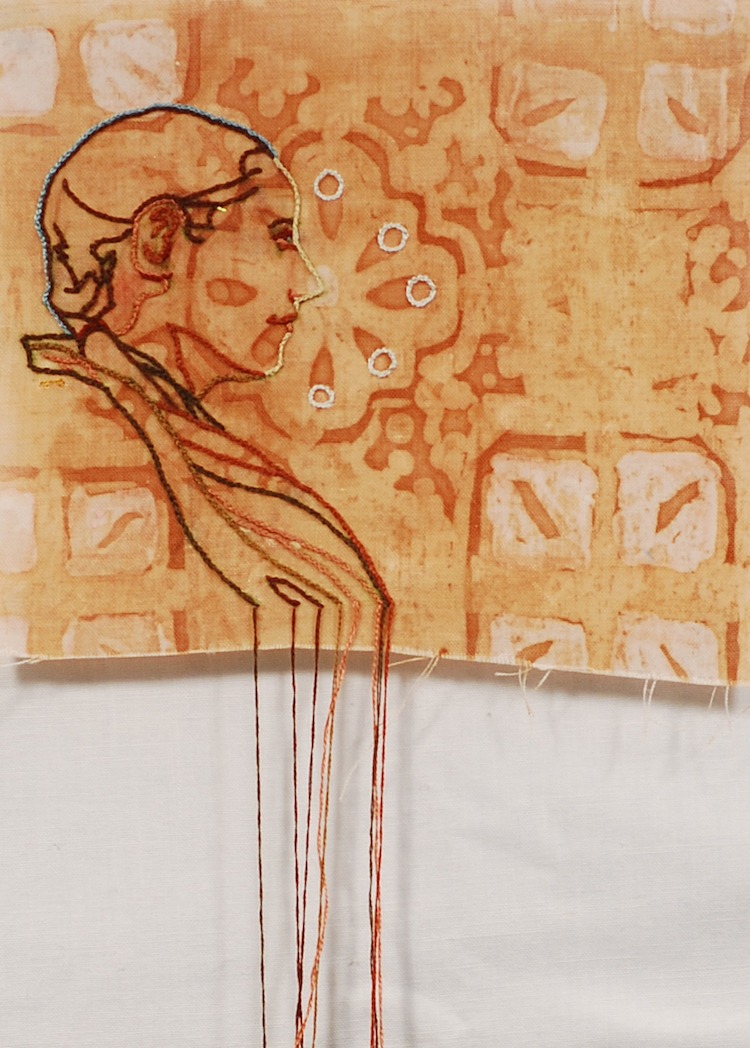
What or who were your early influences and how has your upbringing influenced your work?
Both of my parents are also visual fine artists: my mother is a watercolorist, focusing on landscapes and birds, and my father is also a painter, focusing on portraits and figures. They were very active within a pretty wonderful group of artists in Corning, NY, so I spent a lot of time around artists, in museums, and at gallery openings when I was young.
I count myself so lucky to have benefited from such unwavering and sincere support to pursue art however it makes sense to me. I know too many creative spirits who were pointed in more practical directions. Even I have certainly gone through many practical phases. But every time I renew my efforts to be a full-time artist, I know my family and friends have my back, for which I am grateful beyond words.
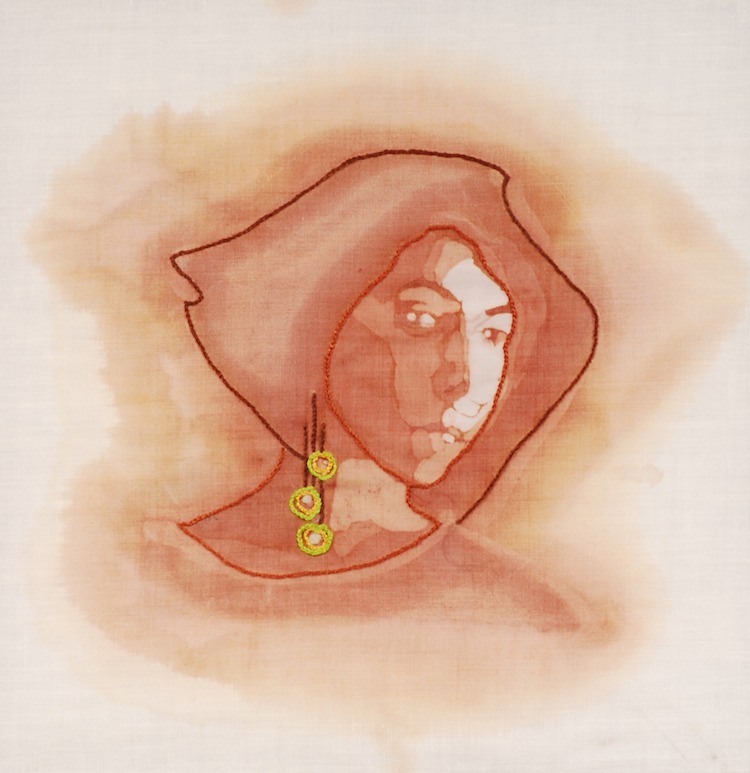
And, more specifically, how was your imagination captured by stitching?
My maternal grandfather had embroidered several squares of birds and flowers for a quilt, but there were still 10 squares left: so, my grandparents decided to divide them among the five granddaughters to finish. I remember being extremely excited to choose my squares and felt such a sense of accomplishment when I tied my last little French knot.
It was from that project that I became very fond of the idea of embroidery as a form of drawing, where your drawing can be soft, intricately textured, and could even provide both physical and emotional comfort.
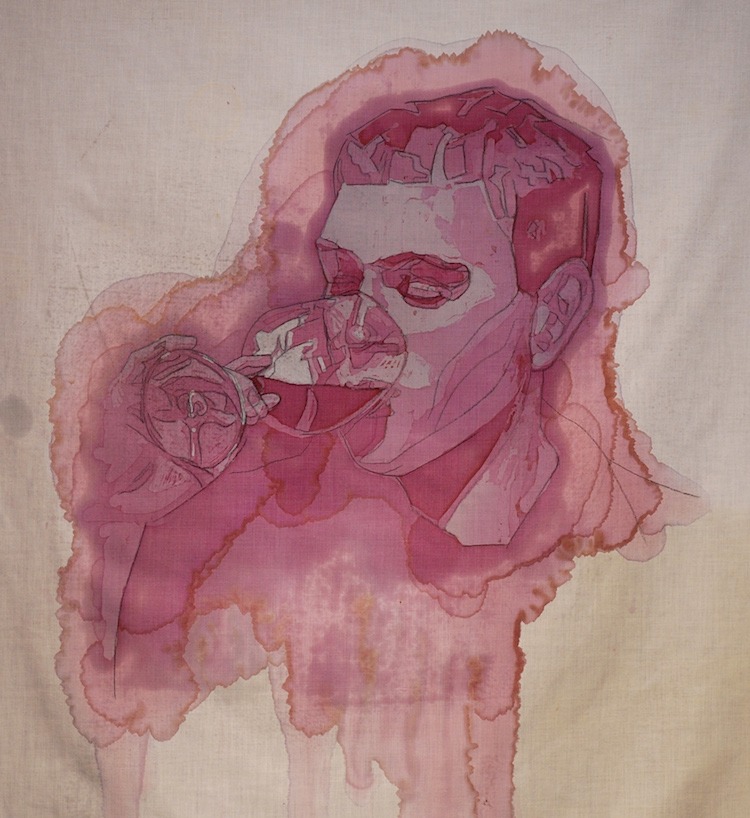
Future artist
What was your route to becoming an artist?
Well, when I was only a few months old, my parents took me to an art opening and stuck a name tag sticker on me that read, “Future Artist.” Like I said earlier, I count myself extremely lucky to have grown up in an environment that was intensely nurturing of creativity and artistic sensibilities. It is easy to become an artist when you are continually receiving gentle nudges in that direction.
In high school, my art teacher Mr. Duffy trusted me enough to let me spend hours working on whatever I wanted, earning me the nickname, Art Factory. This aligns well with the fact that my first name means industrious, and my middle name is the same spelling as the first person present tense conjugation of the French word, faire, which means to do or to make.
During my formative college years, I was also lucky to study with practicing artists like Martin A. Poole, David Higgins, and I was a studio assistant and model for Thomas S. Buechner, who was a significant mentor of mine.
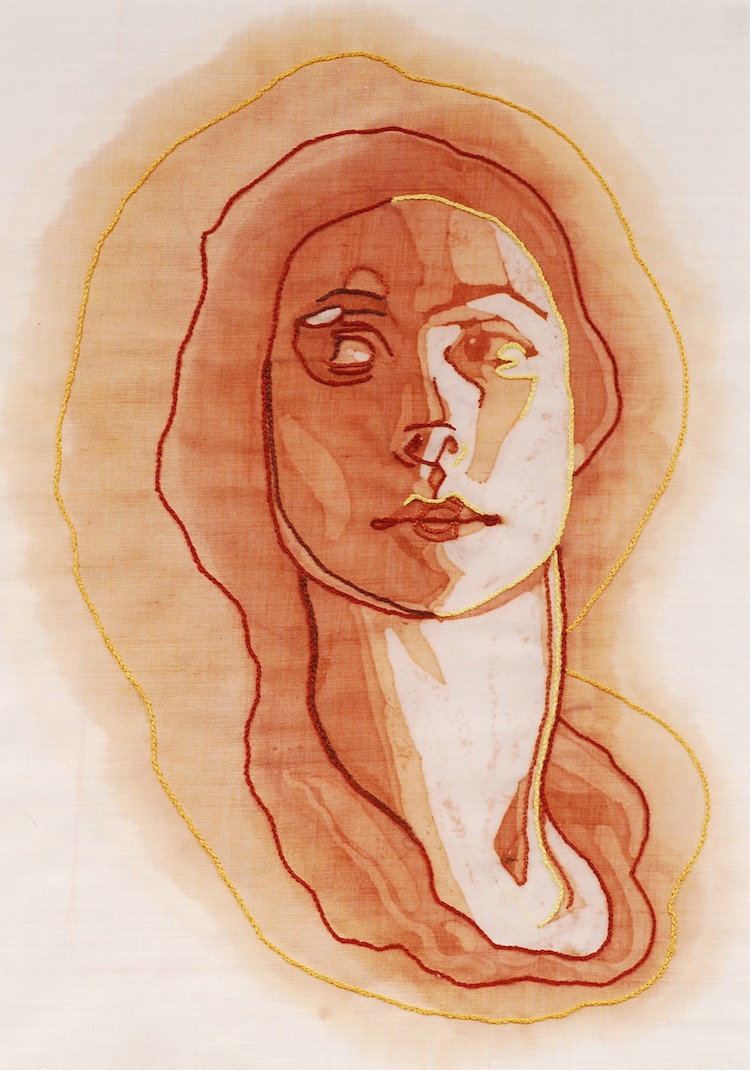
However, I still have experienced lapses in my confidence in art as a calling: the age-old battle between making a living vs. making art is another constant. I spent two years in business school; studied graphic design instead of fine art; worked in arts administration and in galleries instead of making art; endured 18 months of a salaried office position when I first moved to Portland, ME; and I am currently working towards being a certified medical translator as a means of providing for myself. It is a small but important victory to look at one month’s worth of bills paid by art income.
How do you use these techniques in conjunction with embroidery?
My wine stains use a modified batik technique using repeated wax resists and wine stains to build the light/dark pattern of a portrait. Since the wine wants to bleed across the fabric, it reminds me of a watercolor; thus embroidery is the means of reinforcing the drawing of the portrait.
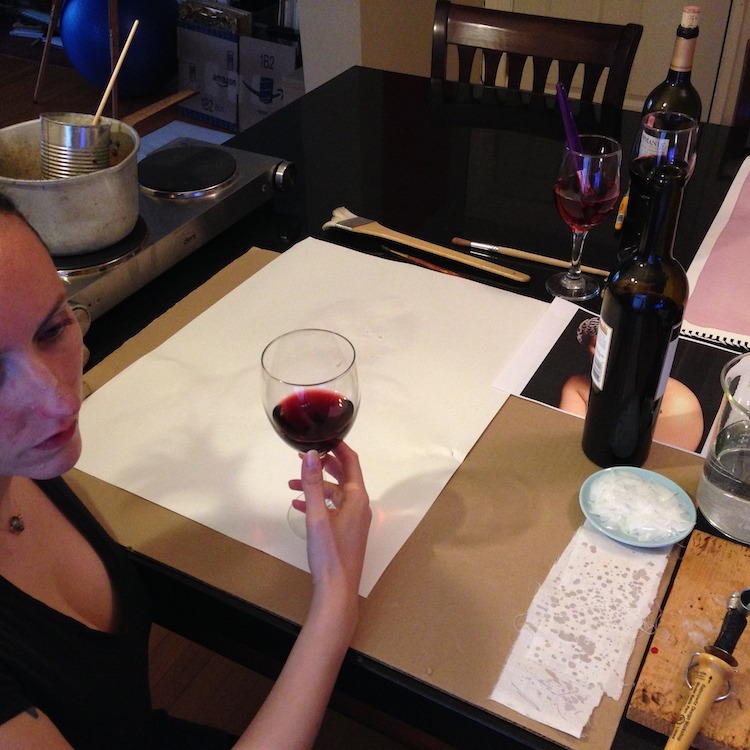

I love embroidery, because it is an exquisitely regulated, slow, and meditative means of drawing, and I chose thread colours to complement and bolster the dried wine stain. So far, I have decided to stay consistent, using only chain stitch; however, I have been toying with the idea of expanding into other types of stitches, such as cross stitch.
Do you use a sketchbook? If not, what preparatory work do you do?
In 2003, I started keeping a sketchbook, largely influenced by the wholly engrossing month-pages by David Higgins. In addition to its obvious use for honing my drawing technique, sketch booking is a way for me to keep a visual log of daydreams, earworms, and brainstorms. It provides a safe place for glimmers of ideas, which come to me in barrages, at times.
In 2006, I decided it would be fun to self-publish my favorite pages, which I have continued to do every three years.
Shrines filled with small treasures
What environment do you like to work in?
I work best in an airy, bright, and well-organised space with a large, clear surface for dealing with larger wine stains. To keep the space from being too sterile, however, I always have an intricate arrangement of images on the walls comprised of pages ripped from magazines, postcards, drawings, photographs, letters, and other artifacts.
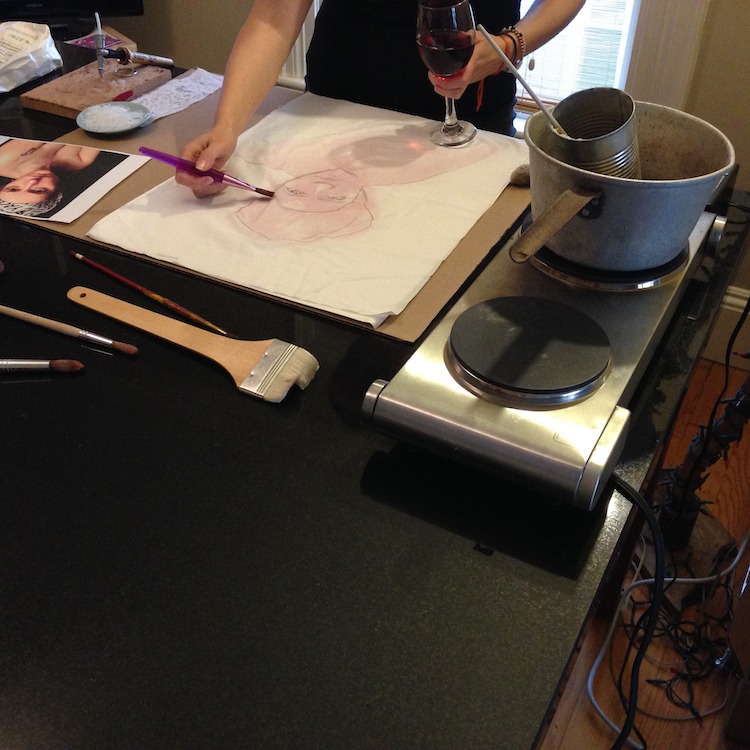
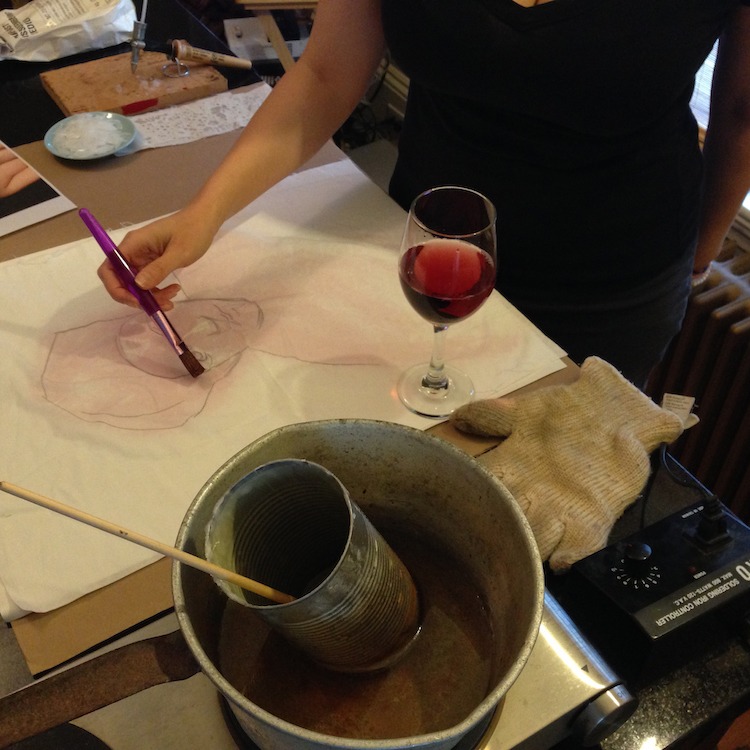
I also love to build shrines filled with small treasures, and my current living space has at least one shrine per room. I have also been known to build small forests in corners of rooms and to wallpaper rooms with flame orange construction fencing. The key is keeping the smattering of wacky things neat and organised.
What currently inspires you?
I am finally letting myself really delve into figurative nudes. Classical fine art nudes are so captivating because the subject is so vulnerable. True beauty is often born from vulnerability: allowing others to view you just as you are—your skin, your secrets, your soul.
Having done a fair amount of nude modeling for other artists, I know firsthand that feeling of vulnerability, not only in the physical act of modeling nude, but also watching the paintings go out into the world, and, to the be honest, even simply publically admitting it right this moment.
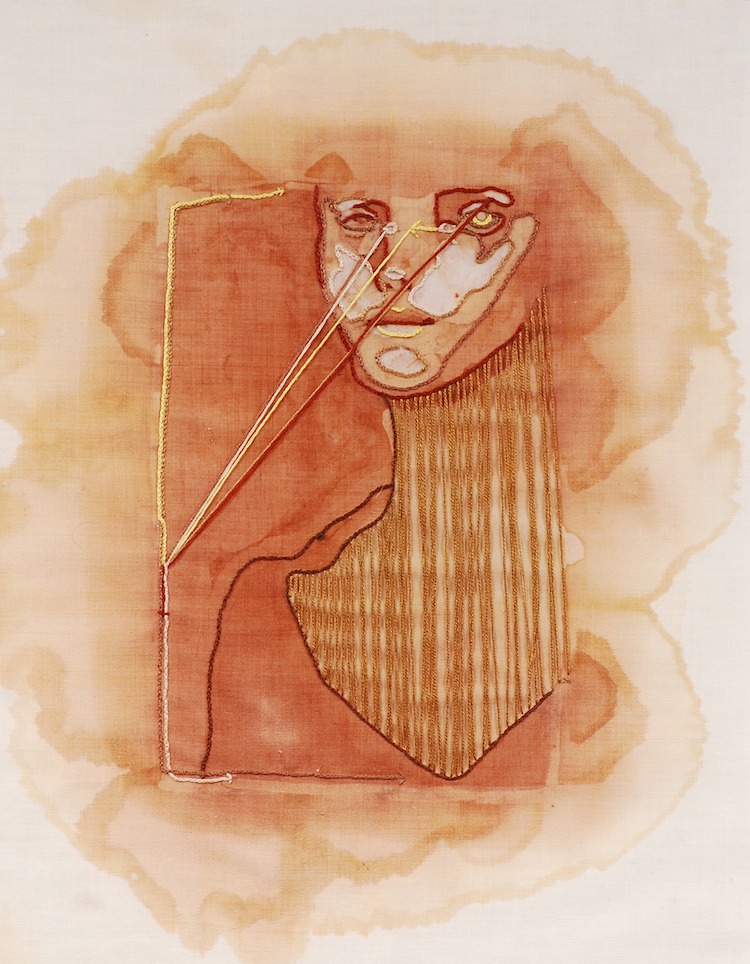
Who have been your major influences and why?
David Bowie is both a major influence and currently inspiring to me because he embodied gesamtkunstwerk in such a stunning way. His life was art. His death was art. He took music, performance, film, fashion, philosophy, even his personae and made it a total work of art with cogs and threads that defied space and time, looping in and out of his lifetime’s body of work. He championed other artists, too, collaborating and elevating. I could go on and on.
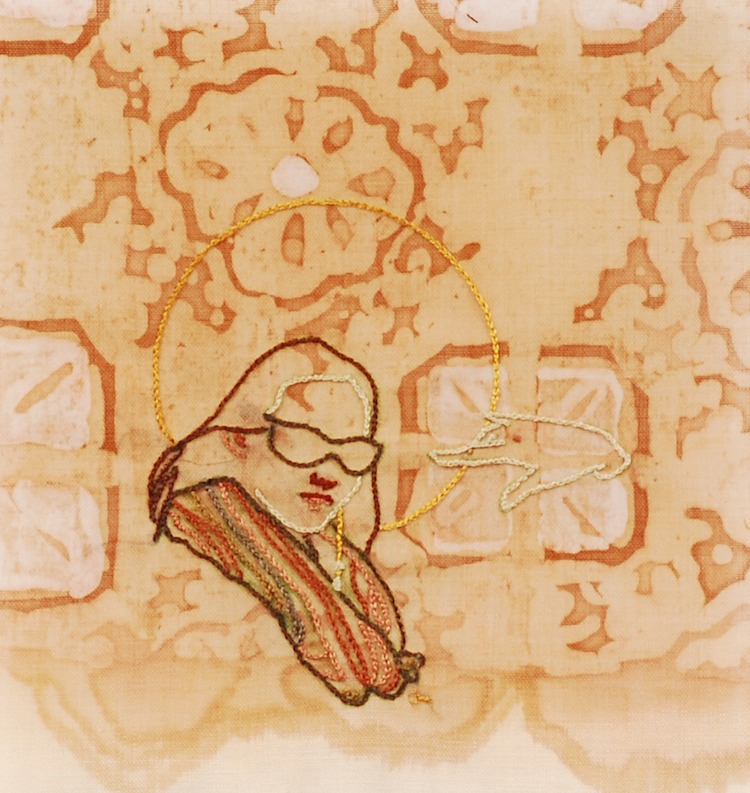
Tell us about a piece of your work that holds particularly fond memories and why?
The large wine stain, Duke (Bacchus), is a portrait of my beau. We had only been seeing each other for a few weeks, and I fondly remember the afternoon I took his photo after we had gone on a long walk around old neighborhoods.
His smile is the perfect blend of vulnerability from those delicate first few weeks of seeing someone and a genuine glimpse of his golden core. He had been studying winemaking at the time, and his profession is bartending, so the subtitle, Bacchus, seemed all too fitting.
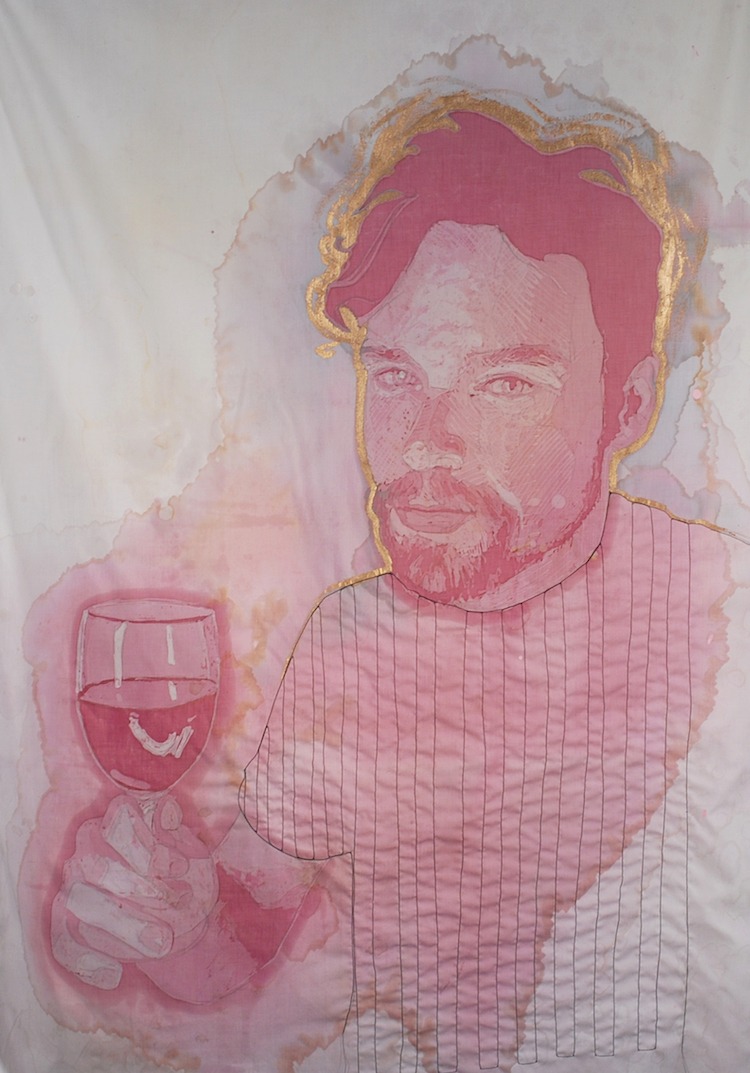
My love of faces and figures
How has your work developed since you began and how do you see it evolving in the future?
My work tends to jump from medium to medium because I believe myself to be a multipotentialite, a term that Emilie Wapnick brilliantly coined.
I am most motivated by the drive to figure out new ways of combining things, like batik, embroidery, and portraiture, for example. One constant will always be my love of faces and figures: I am naturally keyed into the emotional states of those around me, whether I like it or not, so portraits are the most intriguing subject matter to me.
As for the future of my work, if you had asked me seven years ago today, one year before the very first wine stain, I would have been stumped to even guess what was next for my work.
Of course, at this moment, I have ideas about a couple new series that involve wine stains, but I would also admit that I do want to venture into new territory entirely. What that new territory involves is beyond me, but I can at least take pride in my ability to be open and receiving to whatever is ready to come next.
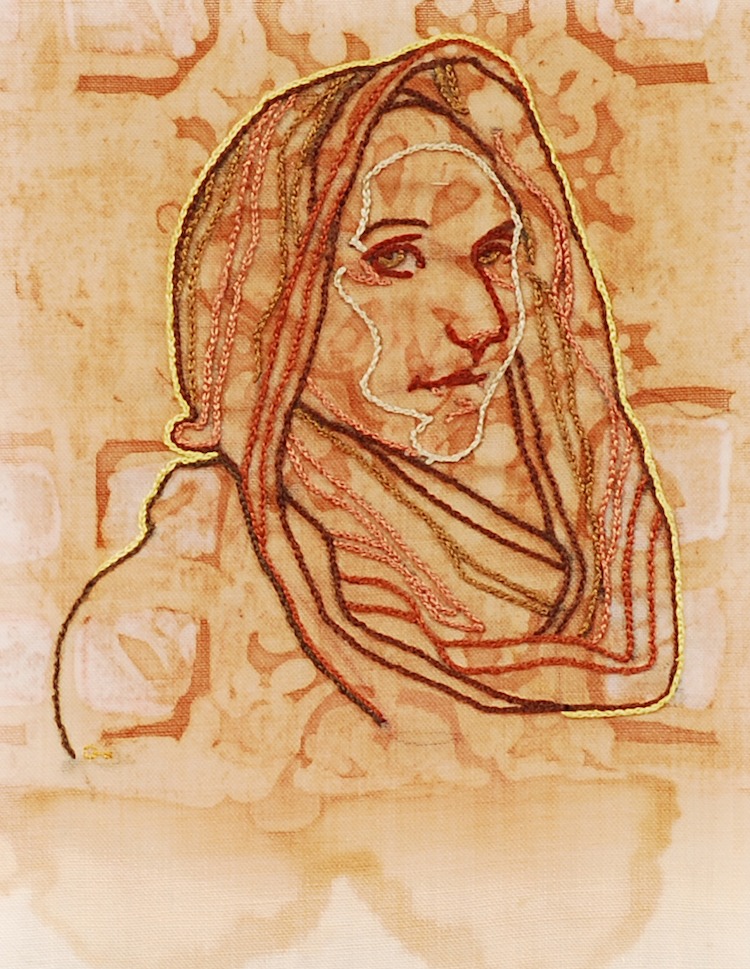
Where can readers see your work this year?
I will have a show of new wine stains at the Hinkle Library at Alfred State in Alfred, NY from August 29 – September 30.
I am also excited about my residency this September at Hewnoaks in Lovell, ME, which will be focused on new works in embroidery.
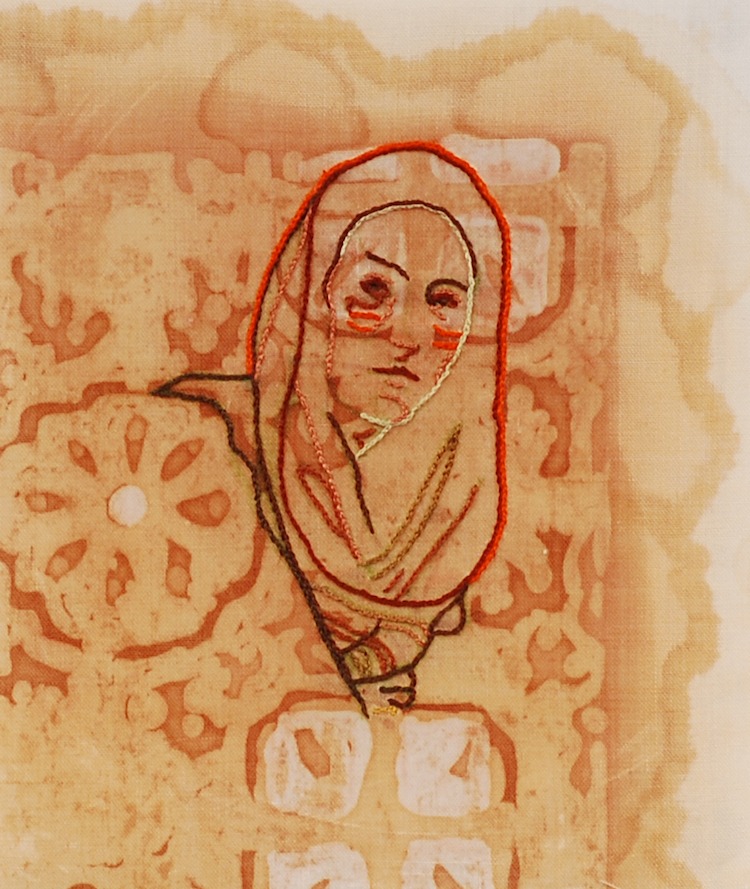
For more information visit: www.trulyamelia.com and www.hoursfestivals.com
If you’ve enjoyed this interview why not share it with your friends on Facebook using the button below?
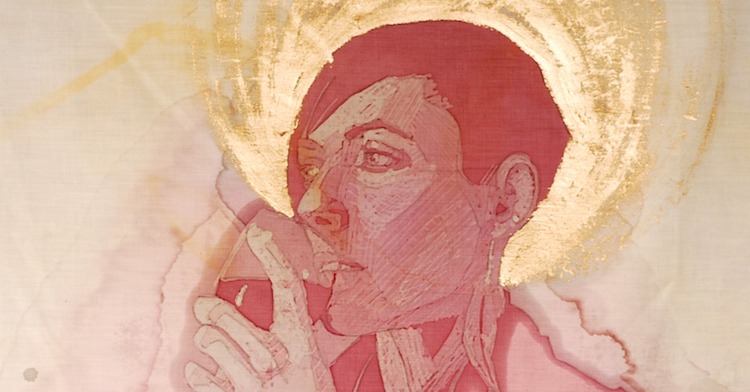

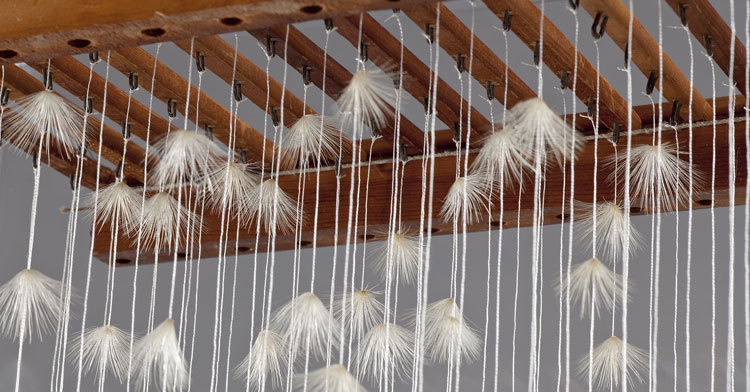
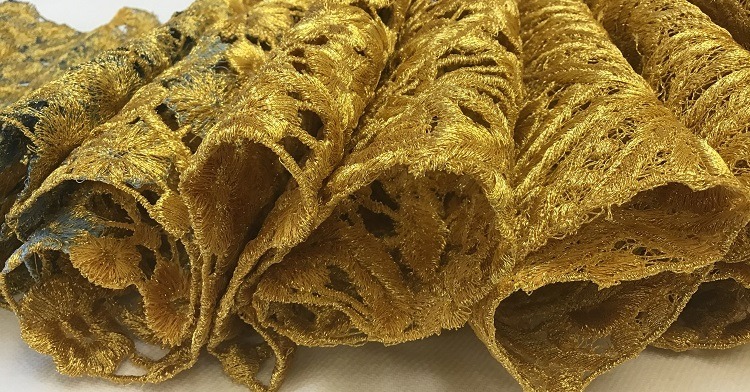
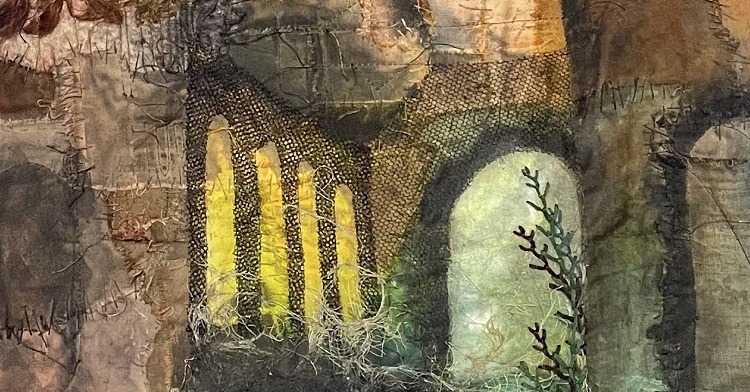
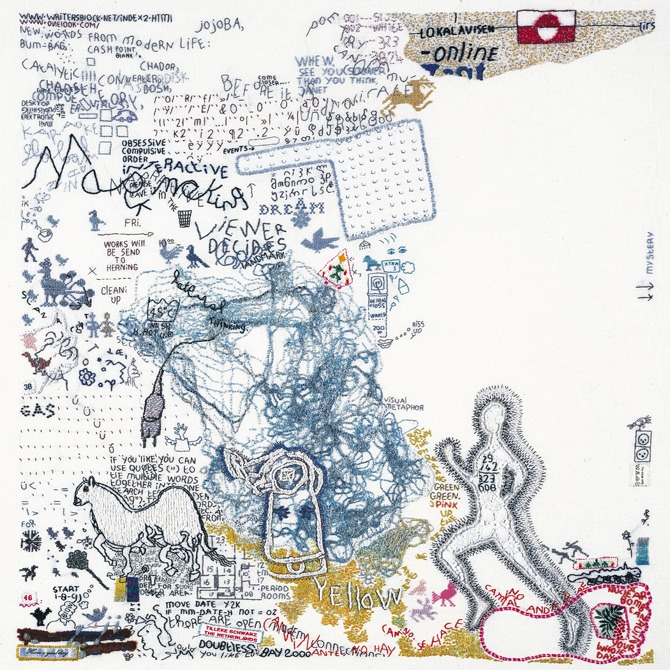
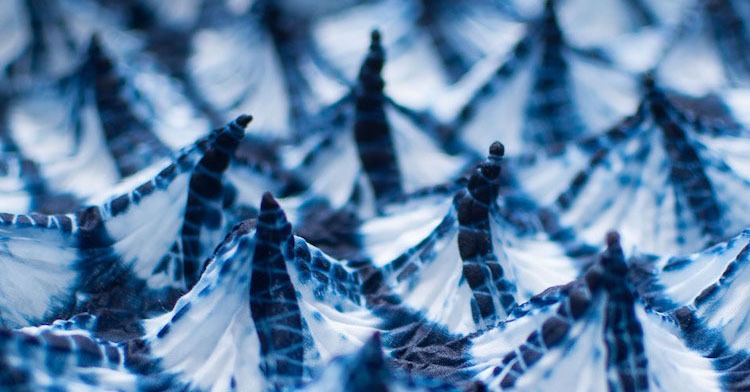
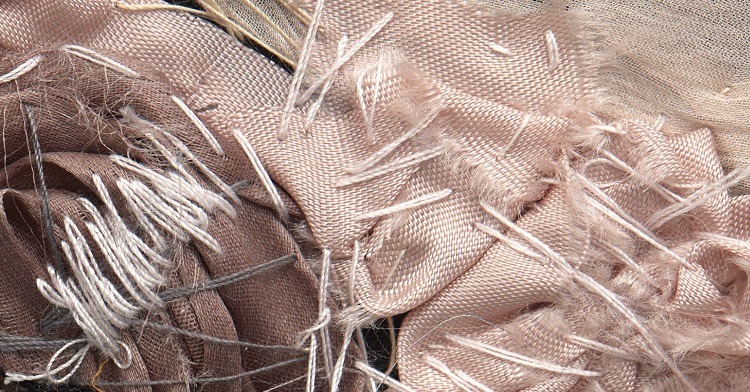
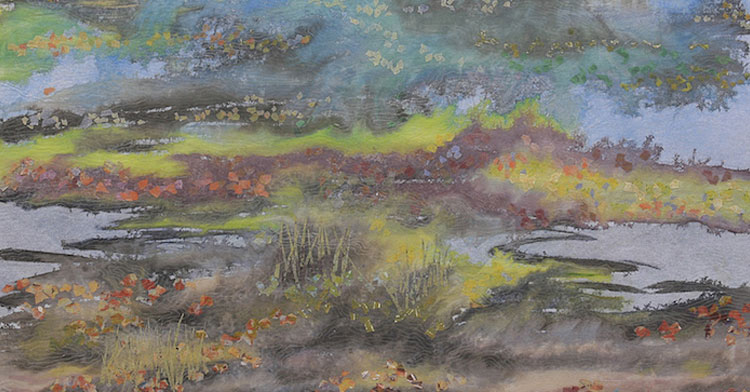
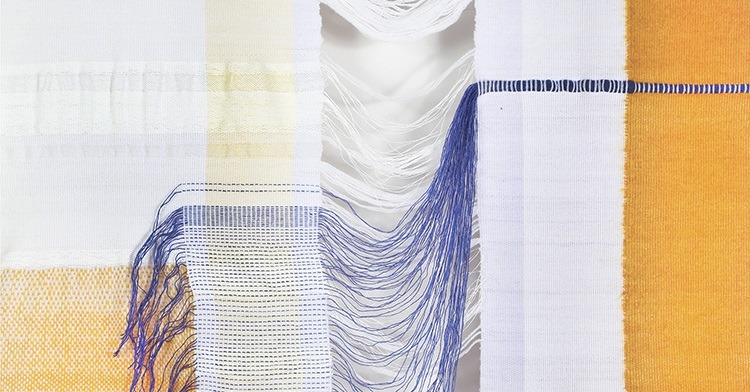
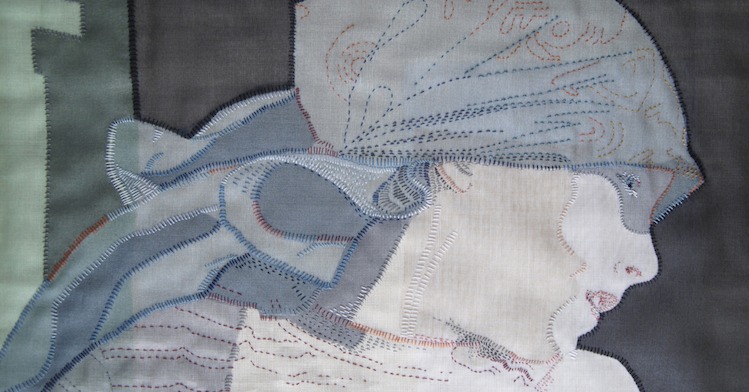
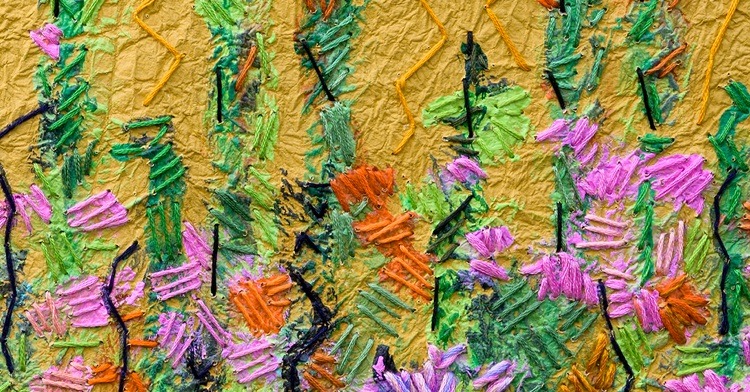
2 comments
Sylvia Doiron
Wonderful informative article. Like the art work and the medium.
Marilyn Theisel
I found this interview absolutely fascinating. I have used coffee and tea whilst drinking the wine. Now I will have to drink a glass half empty whilst the rest is on my artwork! Found this very inspiring. Always looking for new ideas and pleased to read about a very talented and interesting artist. Thank you for this article.